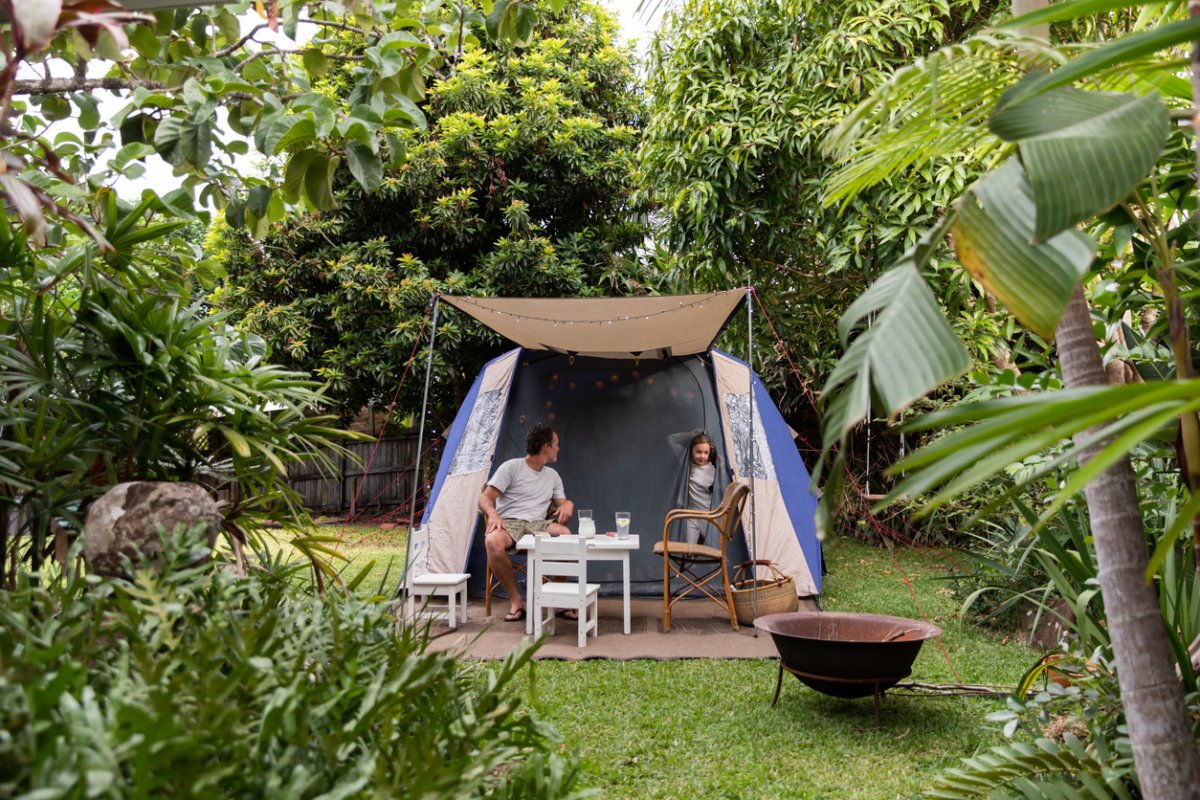

We may earn revenue from the products available on this page and participate in affiliate programs. Learn More ›
There’s nothing quite like a night under the stars, but busy schedules can make planning a camping getaway to one of the best campgrounds impossible. Many families yearning for the great outdoors are scratching the itch by setting up campsites right in their own backyard—and they’re having a blast.
Planning a backyard camping trip might seem like a big undertaking, but this guide will help. Keep reading to learn more about the essential backyard activities, camping gear, and need-to-know info for undertaking one of the most fun things you can do in your own backyard.
Benefits of Camping in the Backyard
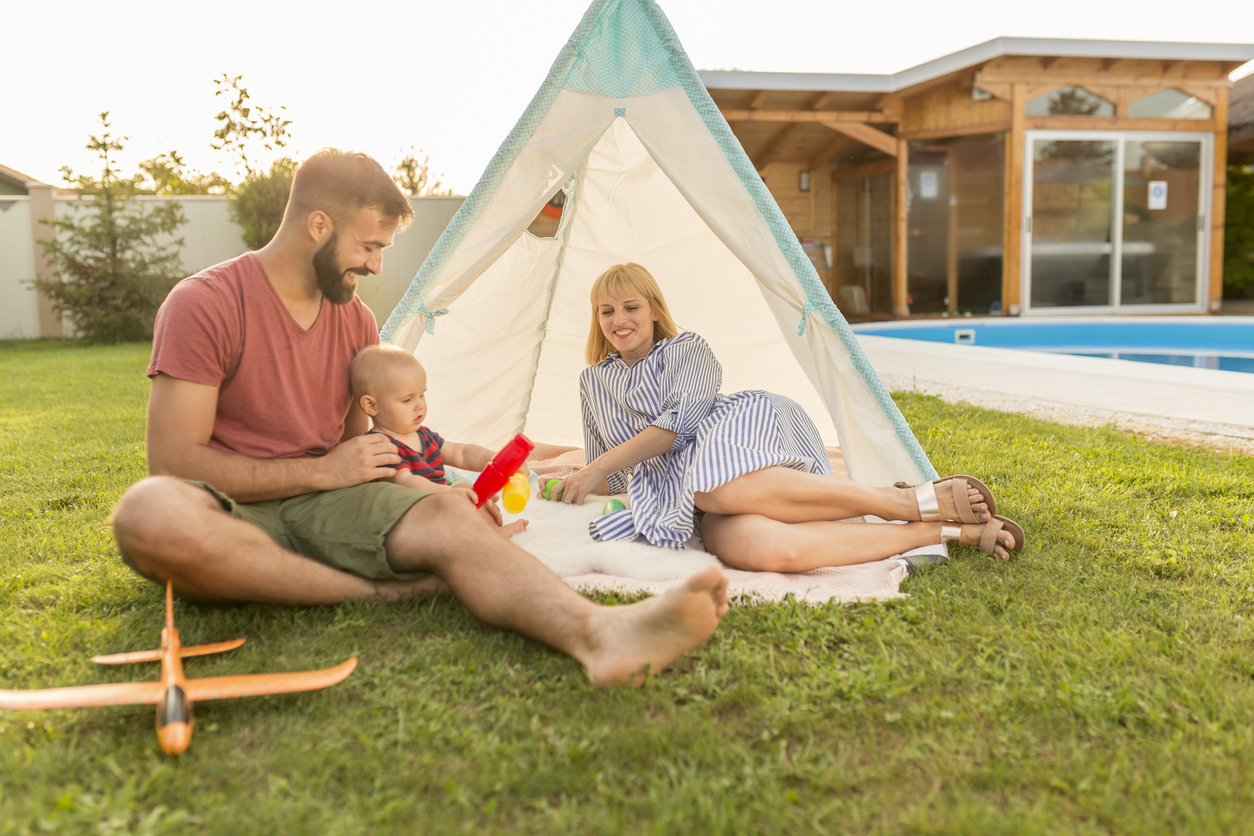
Most folks like roughing it for a few days each year, but there are serious benefits to vacationing in the backyard. Folks who like breathing in fresh air but would prefer to park their derriere on their own (indoor) toilet, rejoice.
Also, families with young children can benefit from setting up a campsite with a fall-back plan. If the baby’s not comfortable in the tent overnight, there’s no reason to lose sleep: Just head inside and try again another night.
Not to say that emergencies can’t happen, but they’re much easier to handle in a backyard than they are on a campground in the middle of the woods. This can help children and adults who get anxious by the cord-cutting experience some of the excitement without any of the drama.
Essential Gear for Backyard Camping
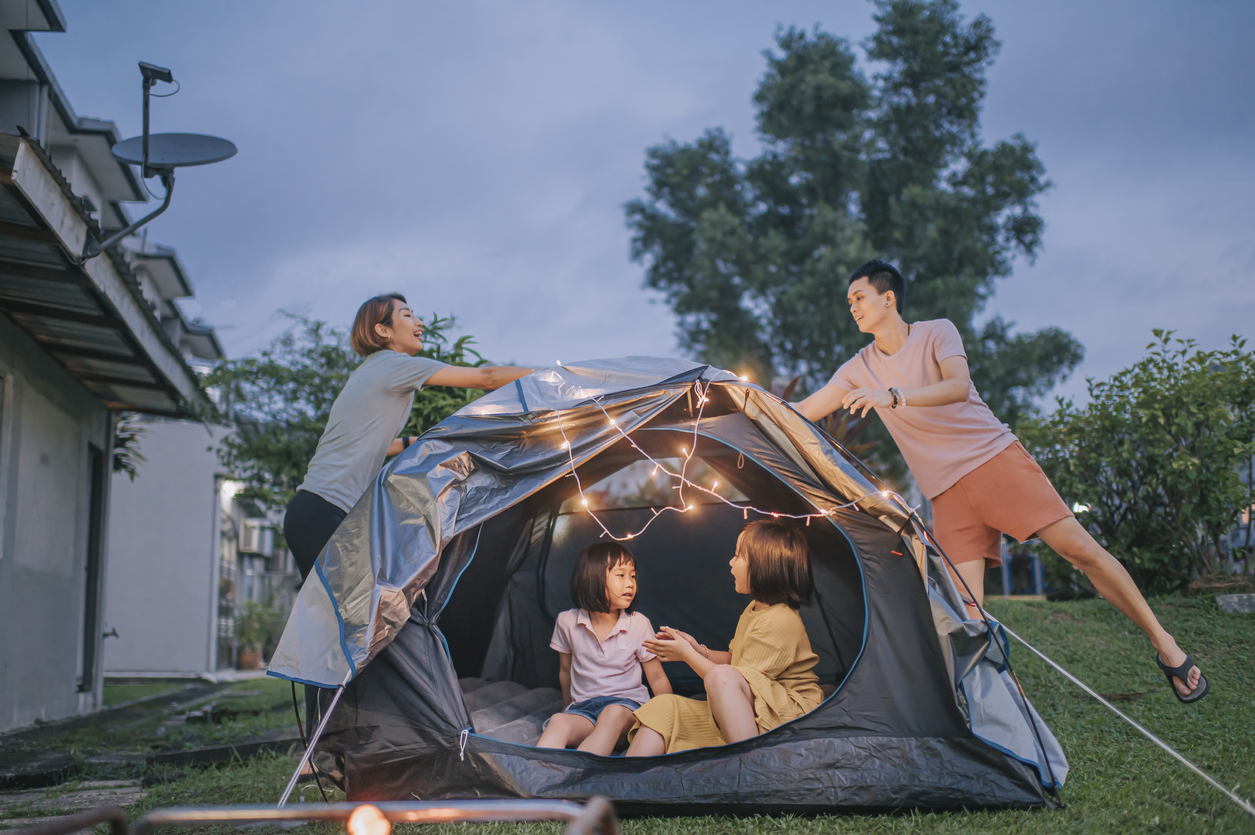
The backyard camping barrier to entry is pretty low, but there are some camping items that will make the experience a bit more enjoyable:
- Backyard tent: CORE 12 Person Instant Cabin Tent
- Tent heater: Mr. Heater MH9BX Buddy Indoor Portable Propane Heater
- Camp lanterns: Vont 4 Pack LED Camping Lantern
- Sleeping bags: Big Agnes Sidewinder Camp Sleeping Bag
- Bug spray: Sawyer Products 20% Picaridin Insect Repellent
- String lights: OxyLED 2 Pack Battery Operated LED String Lights
- Cast iron pan: Lodge 15” Cast Iron Skillet
- Flashlights: Eveready LED Flashlight Multi-Pack
Don’t forget to bring along plenty of snacks, sweatshirts, and pillows to make it a truly comfortable not-so-far getaway. Also, a fire pit and a pile of firewood are always good backyard camping ideas.
Setting Up the Tent
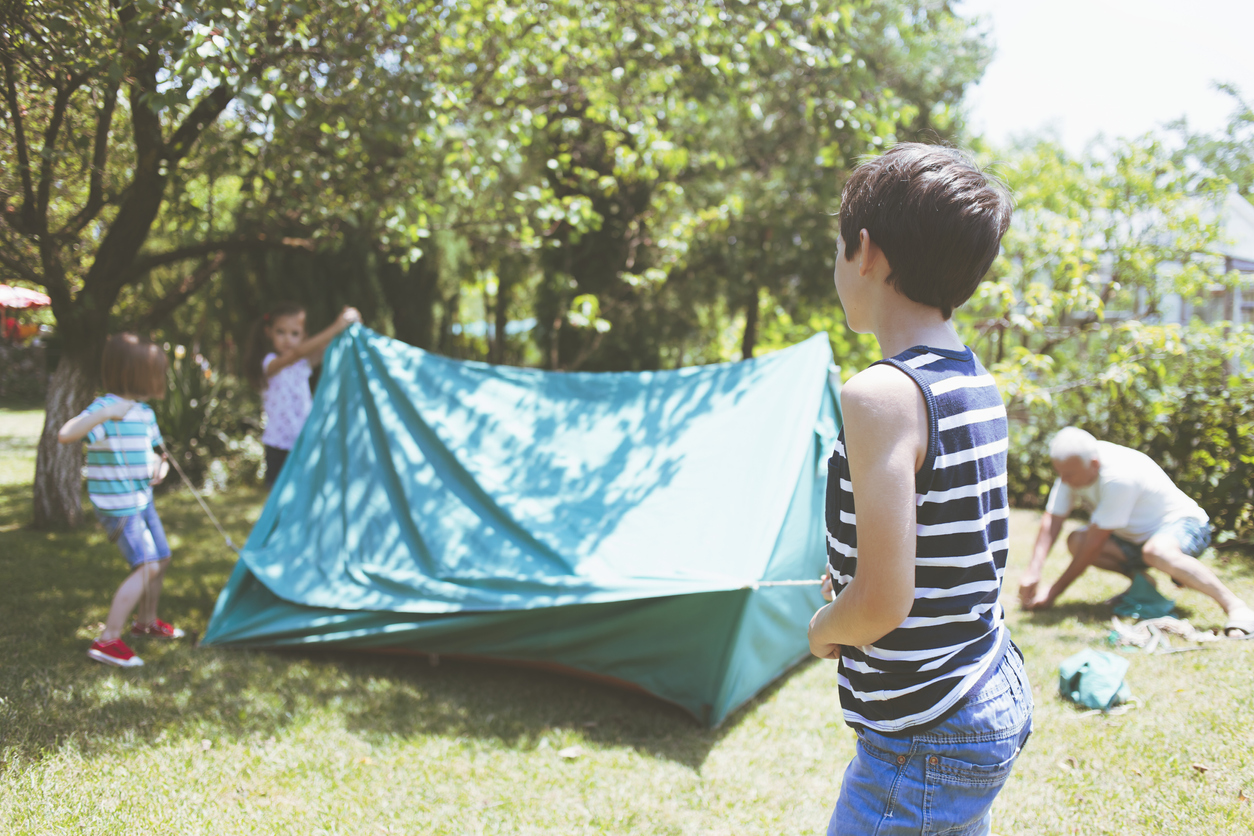
Setting up the tent should be a family affair, so be sure to get everyone involved. Find a flat, dry spot in the yard, and have the younger kids spread a tarp out to protect the tent from moisture and dew. Older children can assemble tent poles (beware of the inevitable sword fight), and help the parents feed the poles through the tent’s tunnels, loops, and grommets.
If there are multiple tents, consider setting them up so the doors face each other. This configuration will give the backyard campground a bit of a community feel, allowing everyone to lounge in front of their tents without disrupting the laughs.
Deterring Animals and Insects
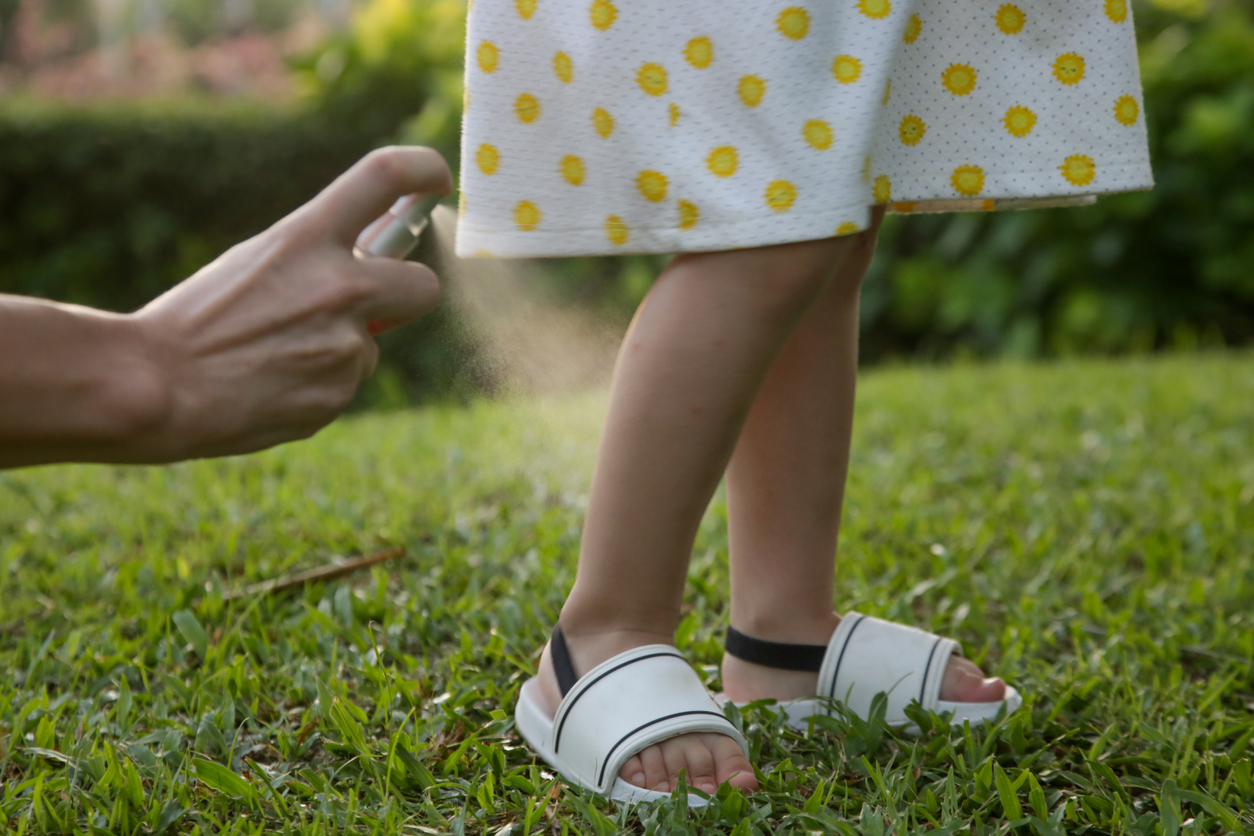
It’s true that animals and insects are part of camping, whether it’s in a backyard, a state park, or a private campground. But there are ways to prepare and deter them. A lit fire will help, but it’s not a good idea to keep it burning all night.
First, be sure to keep plenty of bug spray on hand to prevent mosquitoes from snacking on campers. It’s also worth setting up a bug zapper a few feet outside of the campsite.
It’s more difficult to keep curious animals away, but cleaning up after snack time and bringing food and garbage inside will help. Also, leaving the backyard lights or string lights lit all night may help to keep critters at bay.
Campfire Safety

Keeping warm, roasting snacks, or keeping bugs and animals from ruining a good time are all backyard camping essentials, but fires need to be taken seriously. Here are a few tips:
- Check with local jurisdictions. Some towns or counties don’t allow backyard fires. Also, it may be illegal to burn anything during dry seasons where wildfires are common.
- Only light fires in burn pits. Fires on grass can be hard to contain and are unsafe.
- Be sure to clear any brush, dead leaves, and grass clippings from the burn pit area before lighting a fire.
- Keep two buckets of water on hand, one on either side of the fire pit. If there’s an emergency, there will always be a bucket of water nearby, plus it often takes two buckets to extinguish a fire completely before bedtime.
Most important, make sure to use common sense when children are around campfires. Kids should remain seated when roasting marshmallows, and any running or horseplay near the fire should not be tolerated. Make sure the rules are clear before lighting the first match.
Creature Comforts for Backyard Camping
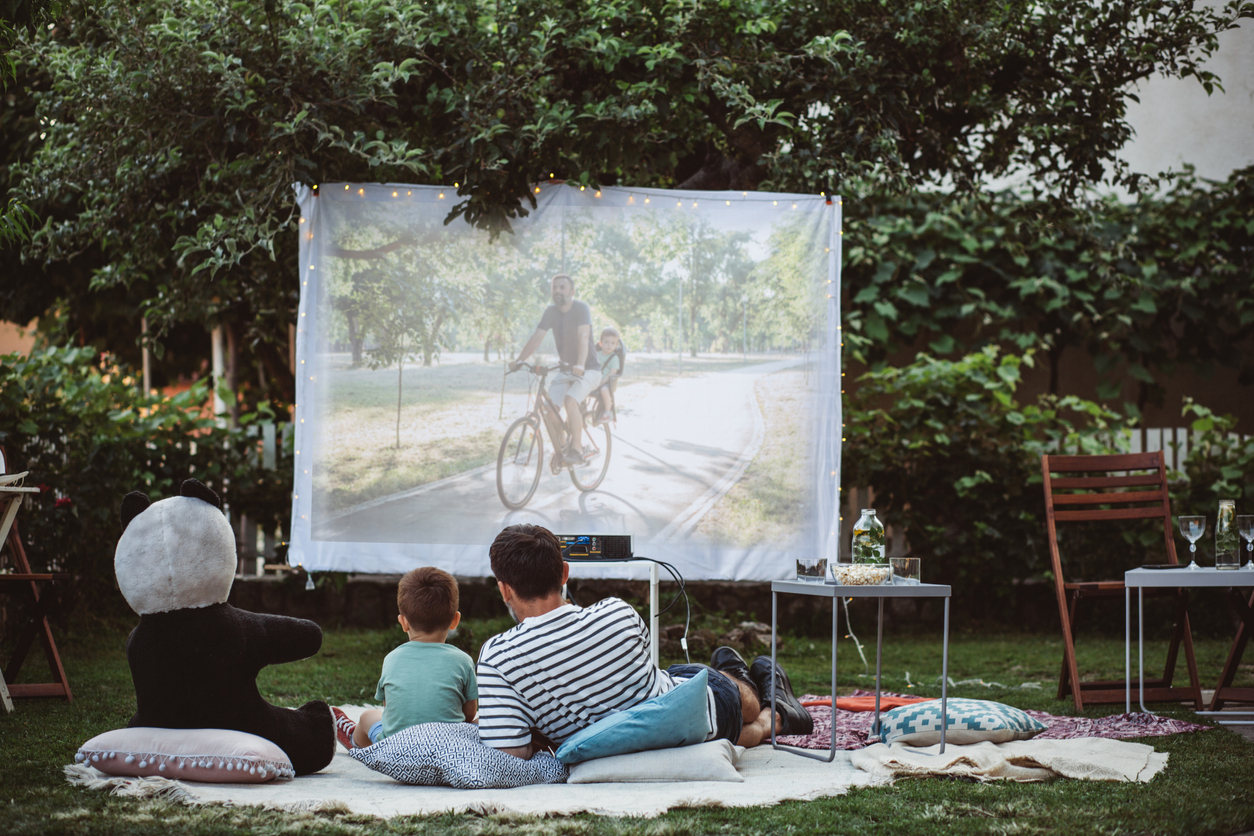
One of the best parts of backyard camping is there’s no reason to give up the creature comforts of home (unless that’s the point). Running an extension cord from the house enables backyard campers to set up a projector and watch a movie, or set up lights. A few pillows off the couch, some comfy blankets, and an air mattress can turn a backyard camping tent into a full-on lounge.
Also, don’t be shy about bringing the patio furniture to the campsite. Setting these chairs up around the fire or projector screen allows folks to kick back without worrying about bugs or dew. The table can even serve as a handy snack station, turning the event into a backyard buffet.
But, most of all, don’t pretend that the indoor plumbing doesn’t exist. Allow kids and other campers to run inside to relieve themselves or freshen up before bed, especially if the goal is to enjoy a backyard camp again in the future.
Outdoor Activities for All Ages
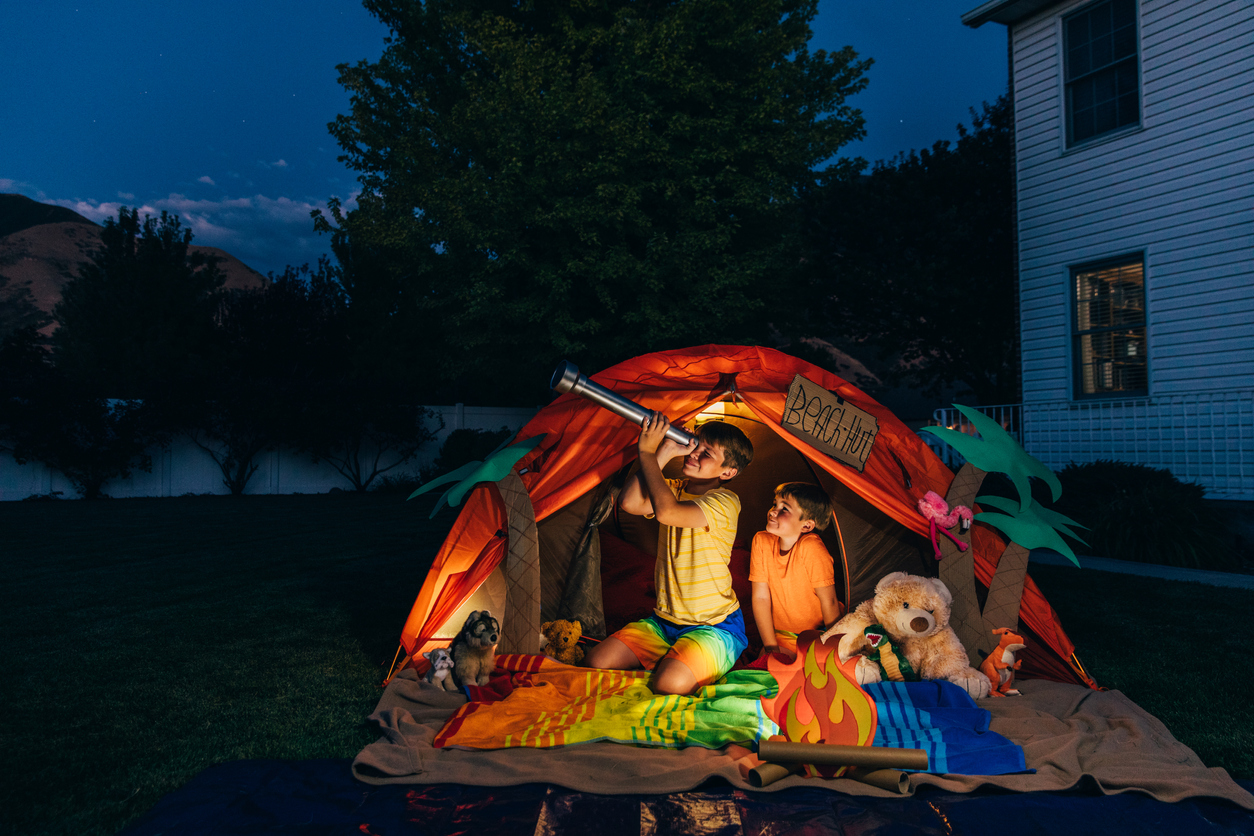
There are lots of backyard camping activities—something for all ages, in fact. Here are some camping activities for kids and adults to fit into the itinerary:
- Classic board games and card games
- Backyard scavenger hunts or nature walks
- Roasting hot dogs and marshmallows over a fire
- Making s’mores
- Ghost stories (but seriously, don’t scare the little ones)
- Stargazing and identifying constellations
- Horseshoes, bocce, bean bag toss, and ladder ball tournaments (these games also make great gifts)
- Movies under the stars with a portable projector
Those are just a few of the things to do while camping in the backyard. As long as everyone’s together and relaxed (something that’s not always possible with little ones at a real campground), everyone can find some backyard fun to put a smile on their face.
